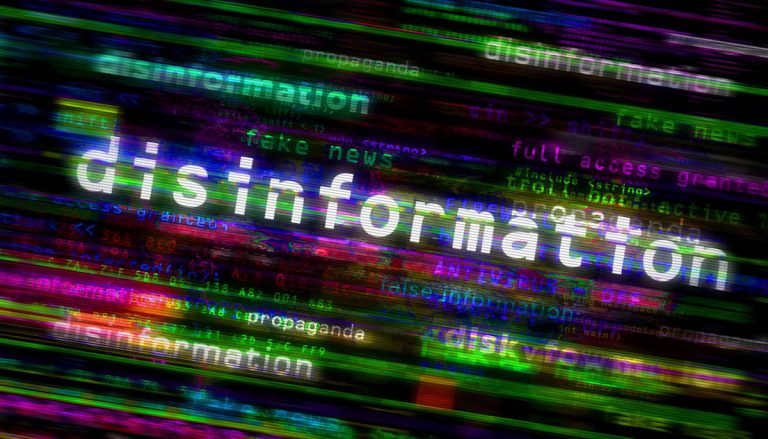The Disinformation Pandemic: A Deep Dive into Deception in the Digital Age
Disinformation, the deliberate spread of false or misleading information, has reached pandemic proportions in recent decades, inflicting significant social damage globally. No longer confined to hostile governments undermining democracies, disinformation has become a pervasive tool in domestic politics and the propagation of harmful ideologies. Its primary purpose is to manipulate beliefs, eroding trust in established truths and implanting fabricated narratives that serve the manipulator’s agenda. This surge in disinformation directly correlates with the rise of digital networks and ubiquitous social media, providing unprecedented reach and impact.
While the mass dissemination of propaganda is not a new phenomenon, dating back to the Gutenberg printing press and even early television exploited by the Nazis, the digital age offers unparalleled opportunities for purveyors of disinformation. Rogue states, political factions, ideological movements, and malicious actors now have direct access to billions of individuals through smartphones, computers, and pervasive internet connectivity. Advanced digital technologies, such as artificial intelligence (AI), further amplify this reach through microtargeting, delivering individually tailored disinformation narratives. The emergence of "deepfakes," AI-generated synthetic media that can convincingly fabricate events, poses an even greater threat, a concern raised decades ago that unfortunately went unheeded.
Understanding the mechanics of disinformation requires recognizing its inherent connection to deception. Disinformation is a form of deception deployed within a social context, often associated with political discourse. While often conflated with "misinformation," which is the unintentional spread of false information, disinformation is characterized by its deliberate and manipulative intent. Both contribute to the broader phenomenon of "fake news," which encompasses various forms of false or misleading information. Deception, at its core, aims to alter beliefs, either by weakening existing convictions or supplanting them with fabricated ones.
To grasp the complexities of deception, one must consider its biological roots. Evolved as a survival mechanism for both predator and prey, deception has a long history in the natural world. One effective model for understanding deception is the Borden-Kopp model, developed independently 25 years ago, which utilizes information theory to describe four primary methods of deception. Degradation involves obscuring information with noise or irrelevant data, akin to camouflage in nature or the modern tactic of flooding audiences with distracting messages. Corruption, exemplified by mimicry in the animal kingdom, entails creating convincing fakes to induce false beliefs, much like contemporary deepfakes. Denial disrupts the flow of information, similar to a squid’s ink cloud or the online practice of deplatforming individuals or blocking websites. Finally, subversion, perhaps the most insidious method, manipulates the victim’s information processing, exemplified by cuckoos tricking other birds into raising their young, or the political practice of "spin doctoring" to reshape public perception of unfavorable events.
The effectiveness of deception hinges on the cognitive vulnerabilities of its targets. Individuals who approach information with skepticism and critical thinking are less susceptible to manipulation. Conversely, those who lack critical assessment skills or readily accept information at face value are more vulnerable. Human cognition, shaped by evolutionary pressures, often prioritizes efficiency over accuracy, leading to cognitive shortcuts that can be exploited by deceivers. Confirmation bias, motivated cognition (interpreting information to align with pre-existing beliefs), the Dunning-Kruger effect (overestimating one’s competence), and a range of other cognitive biases contribute to this vulnerability.
The rapid spread of disinformation online can be attributed to two key factors. First, deceptive messages are often skillfully crafted to exploit cognitive biases, particularly within politically polarized environments, making them more appealing and readily accepted than factual information. Second, the structure and dynamics of social networks, amplified by high-bandwidth digital connections, facilitate the viral dissemination of disinformation. Social media influencers, acting as "superspreaders," play a crucial role in this process. The propagation patterns of disinformation often resemble those of contagious diseases, as observed in epidemiological models.
The scientific study of disinformation, its mechanisms, its impact on cognitive processes, and its dissemination patterns is gaining momentum after years of relative neglect. As research progresses, a deeper understanding of these complex dynamics will be crucial in developing effective strategies to counter the pervasive threat of disinformation in the digital age. Further research is needed to refine models of belief formation and change, to better understand the psychological and social factors that contribute to vulnerability, and to develop targeted interventions to mitigate the spread and impact of disinformation. The challenge lies in balancing freedom of expression with the need to protect individuals and societies from the harmful consequences of deliberate deception.


